ASUS Republic of Gamers and X79 ROG Review – Rampage IV Gene, Formula and Extreme
by Ian Cutress on August 3, 2012 1:00 PM EST- Posted in
- Motherboards
- Asus
- X79
- ROG
Alongside the ROG software, ASUS still bundles in its standard software package, AI Suite II, though with an ROG colored theme. AI Suite II is the way that ASUS bundles all their separate smaller programs into one interface. This is overly more beneficial compared to some other manufacturers' solutions, which can sometimes consist of more than 5 different programs, one for each feature.
Over the past few years, AI Suite has developed from a somewhat slow program that interfered with deferred procedure call latency to a streamlined interface that is quick, easy to use and something worth having. Within AI Suite, we have the following options:
ASUS AI Suite – TurboV Evo
TurboV Evo in AI Suite is our series of CPU and voltage overclocking tools. As shown below, each of the choices is determined by a slider. I typically use TurboV Evo to probe my maximum overclock with regards stability, and then perform a manual change in the BIOS to near those values, then double check again in software.
Part of TurboV Evo is also the CPU Level Up feature, which enables users to apply a series of pre-defined overclocks to their system. We analyze these later in the review.
Because of ASUS' digital design, all of the TurboV Evo features can be manipulated in real time.
ASUS AI Suite – Digi+
Echoing what we have said previously about Digi+, AI Suite also allows direct control of several of the power delivery settings through AI Suite.
Both CPU Digi+ and Memory Digi+ are independently selectable. On platforms with integrated graphics, the iGPU also has Digi+ options.
ASUS AI Suite – EPU
The Energy Processing Unit on an ASUS motherboard is designed to analyze the system, including CPU loading and IO usage, and subsequently regulate power as required to find a balance between stable usage, performance, and energy saving. For most of the channel boards, this makes sense - users in those markets are often looking for ways to save energy. By having a dynamic processor on board to deal with this is a good thing. It is not so important for ROG products, but present if needed. ASUS have a small slideshow online to describe more of the history of the EPU.
Software wise, an interface is provided such that the user can control what types of energy saving may be beneficial to them:
ASUS AI Suite – Fan Xpert
Fan Xpert is one of the key jewels in ASUS' crown. Even though there are advanced fan controllers placed on ASUS motherboards, they are nothing if not paired with some form of configurable software to maximize their usefulness.
On the X79 platform, ASUS use their initial Fan Xpert software, which allows for predefined settings on each of the fan headers on board, or a user-defined profile with two gradients. The software will also test the fans to determine what fan power in the profile relates to which fan speed.
The Z77 platform benefits from Fan Xpert II, which can utilize onboard temperature sensors (either individual sensors or a weighted combination of several) to determine what fan speed should be used under what circumstances. You do not get this level of control with any other motherboard manufacturer.
ASUS AI Suite – Probe II and Sensor Recorder
Part of ASUS' software backbone is to ensure that for whatever extreme configuration the user has selected, they should be told if it ventures outside a series of safe parameters. This is important for a long-term substantial build, should anything fail (CPU fan, water-cooling pump). The AI Suite Probe II software is what this does - by setting an immediate threshold, AI Suite will pop up whenever it goes above the threshold to take action. The Sensor Recorder part of AI Suite will also help the user determine when those thresholds are broken.
ASUS AI Suite – AI Charger+
It is becoming more of a standard feature on motherboards in general over the past year or so to include one USB port that is capable of charging devices more so than the other USB ports. A typical USB 2.0 port provides 100-500 mA depending on how it is wired and the requested power, and a USB 3.0 port provides 150-900 mA. Typically, for a USB 3.0 port this means 300 mA during normal usage. This is also important when USB hubs are used.
By invoking a driver change, ASUS have wired specific USB 3.0 ports on various models of their motherboard range to hit 900 mA. This allows for a up to 3x faster recharging of devices if it can support this current - or BC 1.1 functionality. This means all regular Apple devices, or modern mobile phones. The AI Charger+ has to be invoked through software via AI Suite:
AI Charger+ is designed to work when the machine is any sleep state or turned off, but still has to be initially invoked through software.
Update: ASUS are working on USB Charger+, and should be updating this soon.
ASUS AI Suite – USB 3.0 Boost
A few pages ago we discussed USB 3.0 Boost - the combination of hardware and software to enable different sets of commands to be issued through USB 3.0 to speed up transfers. On the software side, the interface in AI Suite shows the following:
Here we have our OCZ Vertex3 connected to a Thermaltake BlacX 5G, a SATA 6 Gbps to USB 3.0 device. UASP mode has been enabled, indicating that we will get faster small file transfers than standard operation. If the device attached is not capable of UASP (through its controller or other mitigating circumstances), then a user can enable Turbo mode to enable BOT protocols.
ASUS AI Suite – My Logo
Have you ever wanted to get rid of the manufacturer logo when you boot up the PC? ASUS have provided software to do just this, in the form of My Logo. With an appropriate format image, the system will adjust the basic boot up sequence to show your image instead of the ASUS one. For a new machine build I did this recently for a family member to personalize their machine a bit more. System builders can also use this to place their own company's image.
ASUS WebStorage
There are currently many different avenues for online storage on the market. Personally, I use a combination of Dropbox and Google Drive to sync data between my machines, in particular all these reviews I write - in case one computer goes down I would still have the most recent version online in order to recall it on another machine. I also use online storage to share photos with friends and family. ASUS have noticed this trend in recent months, and want to get in on the action.
ASUS WebStorage comes as part of the driver disk with the motherboard, but is open to all via the website. The standard storage is 2GB, and the idea is to synchronize this storage across all your ASUS devices - smartphones, tablets, laptops and ultrabooks.
While this is a 'nice idea', where I am it is rare to see anyone with an ASUS device - maybe spot the odd one or two in a coffee shop once a month. Thus to find anyone who relies solely on ASUS products in the home for all their needs would be rare, or work for ASUS. Nevertheless, it is present when needed, and no doubt it also helps ASUS as part of their decision making with what to create next if they can discern what types of content people want to share.
Users who want to invest in ASUS WebStorage Professional also get access to automatic backup schedules, data version control, and a billing scheme based on usage per month rather than a fixed peak usage.


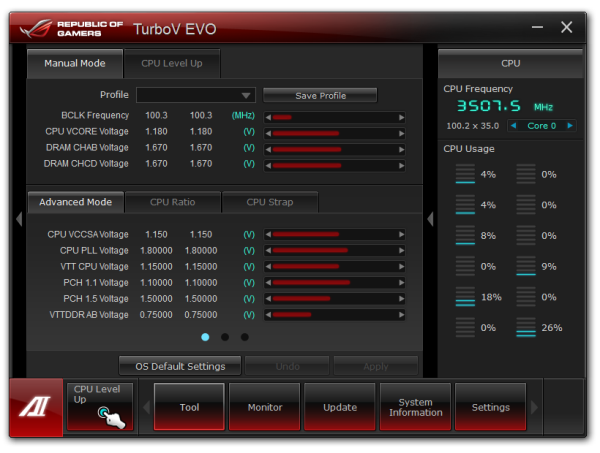




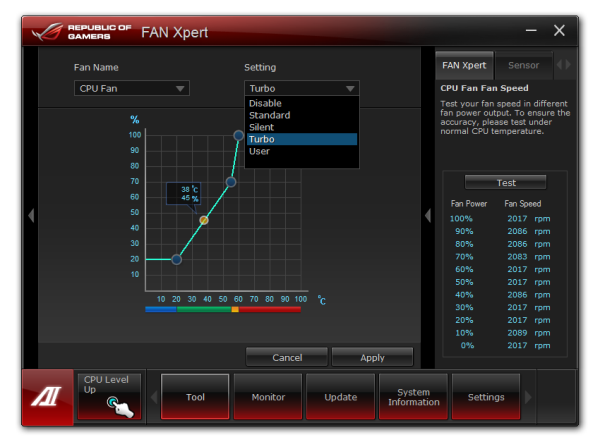
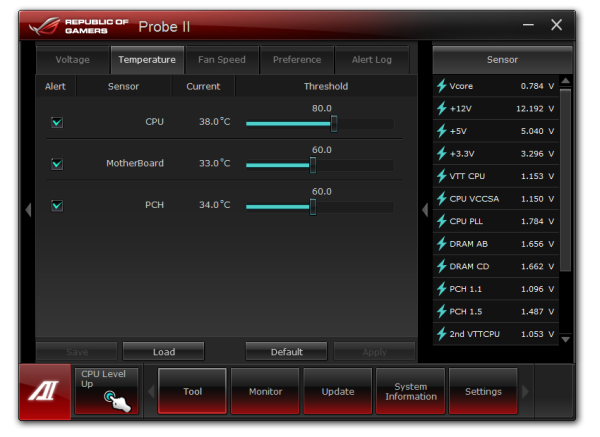
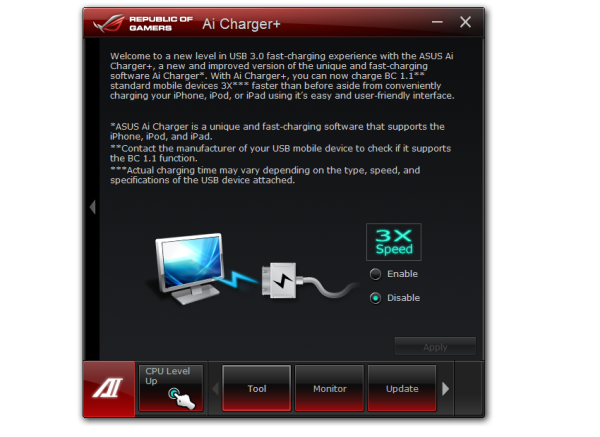

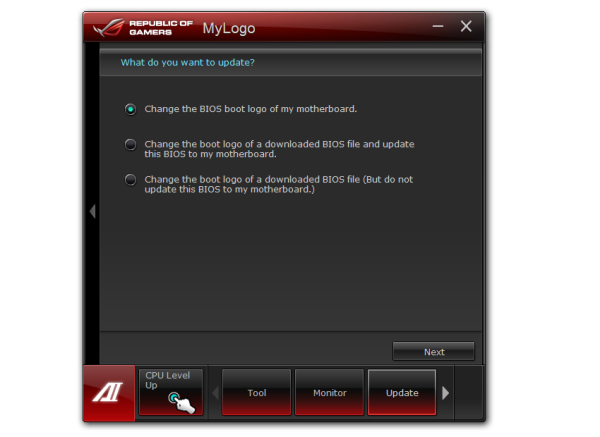















34 Comments
View All Comments
Flunk - Friday, August 3, 2012 - link
Ivy Bridge is more of a notebook oriented update anyway. The much better integrated graphics don't really matter to us anyway.G-Man - Friday, August 3, 2012 - link
Fantastic article, Ian! You must have been working on this for a long time. Thanks for a great read.B - Friday, August 3, 2012 - link
Ian -I would like to point out that under that nice metal Creative X-FI chip badge is, in fact, a Realtek processor. The Soundblaster piece of this is a merely a software implementation. I have this motherboard and was quite disappointed to discover this.
Thanks for great and thorough article.
just4U - Friday, August 3, 2012 - link
Indeed.. It's a little bit of a letdown. It will be nice if they are pushed away from the realtek chip now that Gigabyte is into similiar type boards which utilize the Creative recon chips.primonatron - Friday, August 3, 2012 - link
The article should be edited to specificy that it's only a Relatek chip, not a Creative one, at this point it's just blatent false advertising.When doing the review, did Anandtech actually do a Windows 7 install on it themselves?
They would have known if they did.
IanCutress - Friday, August 3, 2012 - link
As per my comment above, it states this in the tenth page. And yes, I do install Windows 7 fresh on every board I test. It would be crazy not to. I see the whole install procedure at least twice a week, as well as installing each vendors drivers and software. The ASUS install procedure for drivers is all one-button automatic, no user input required, no giant screens flashing up on the screen to ask to confirm this that or the other.Ian
primonatron - Friday, August 3, 2012 - link
I would not put " ASUS have dug into their pockets to provide the Gene with a better-than-Realtek solution, in the SupremeFX III" since it IS a Realtek solution.IanCutress - Friday, August 3, 2012 - link
Written in page 10:"In our SupremeFX III, we essentially get a Realtek codec (presumed ALC898), but by being stage III this chip is isolated from the rest of the board, has a separate EMI shield around the chip, its own PCB layer for audio tracing, a 1500 mF capacitor to reduce ripple, and gold plated audio jacks to minimize resistance. As a result, the SNR is increased to 110dB."
Ian
just4U - Saturday, August 4, 2012 - link
It also needs to be noted that soundchips getting decent software can be a fairly substantial bump.. atleast from my point of view. I seem to recall Creative nailing a company to the wall because they used software the emulated soundblaster stuff and they were reall popular 7 years back.just4U - Friday, August 3, 2012 - link
I've been using these for several years... and have always found that they offer more then most standard ATX boards in lesser and similiar price ranges. Your not paying the Big bucks but you have your foot in the door.. (as it were.. lol)They can be problematic at times mind you.. I've found that quality control can be a bit of an issue with dead boards coming in now and again. We are dealing with sensitive electronics mind you so that happens.
I must say they do have some competition now with Gigabyte's M3s sniper boards, that do utilize a true recon3d sound chip from Creative (as opposed to a realtek chip with software emulation). My hope is that it pushes Asus towards a similiar move as the sound is a key feature for these baby boards.
Personally I think the Gene series deserves your silver award. While high end boards can be had from all makers getting a good solid feature rich gaming MATX board is not the norm and they are almost allways a pleasure to work with.
Great review Ian.